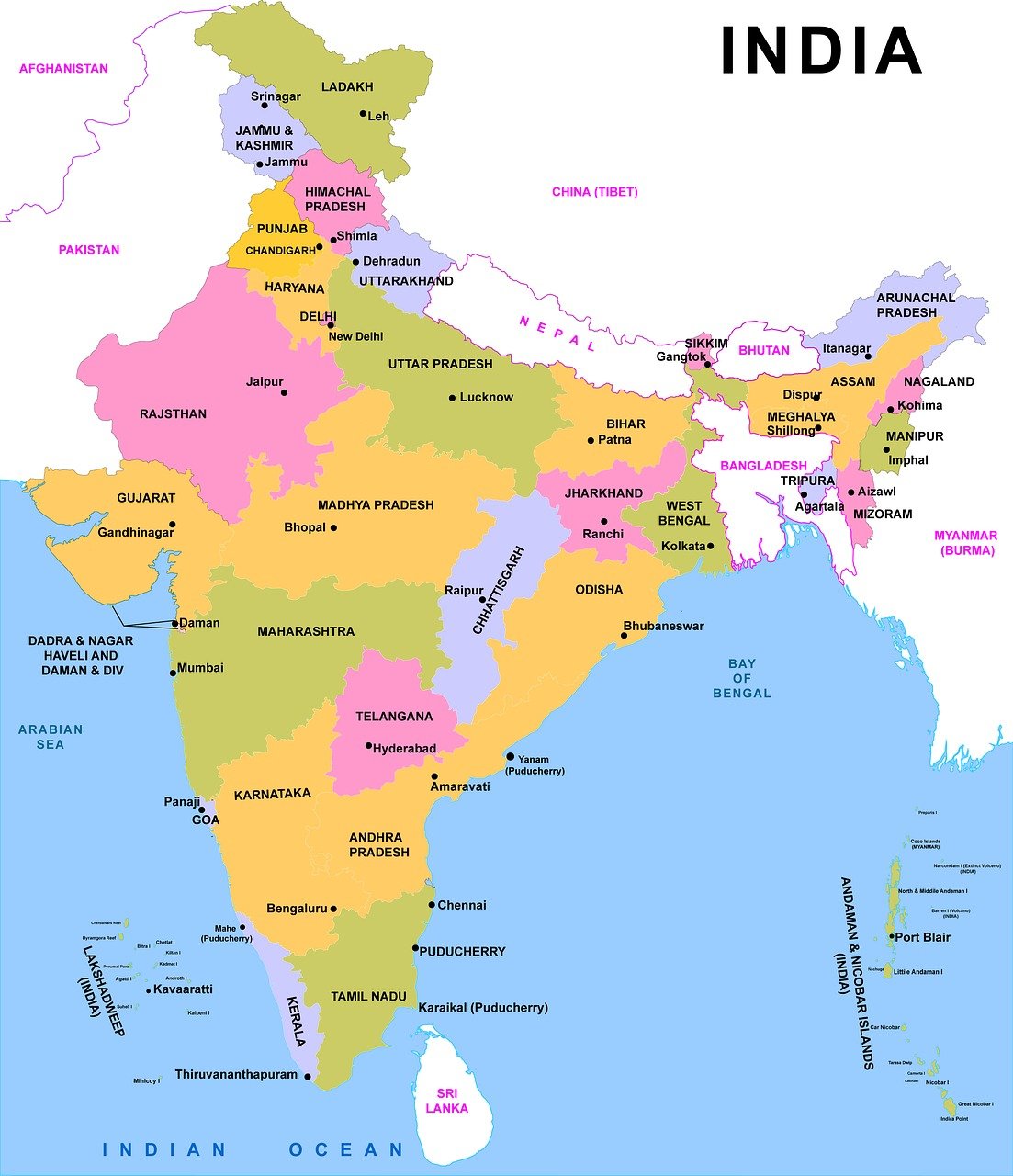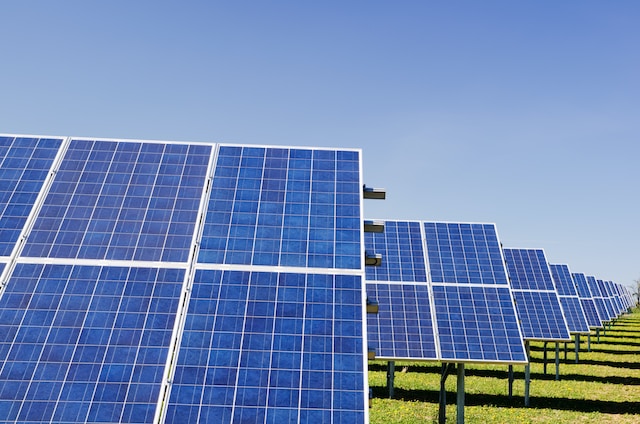Bhadla Solar Park
The Bhadla Solar Park is a large-scale solar power project situated in the village of Bhadla, located in the Jodhpur district of Rajasthan, India. It ranks among the world’s largest solar parks and has played a crucial role in advancing renewable energy development in India.
Here are some important details about the Bhadla Solar Park:
1. Size and Capacity: The Bhadla Solar Park has been developed in multiple phases and currently has a total capacity of 2,245 megawatts (MW) as of September 2021. It covers an extensive area of approximately 14,000 acres (5,665 hectares).
2. Development: The park was established by the Solar Energy Corporation of India (SECI), a government agency responsible for promoting and implementing solar energy projects in the country. The development of the park was part of India’s ambitious goals for renewable energy.
3. Solar Radiation: The location of the Bhadla Solar Park in the state of Rajasthan offers favorable conditions for solar radiation, making it an ideal site for large-scale solar power generation.
4. Solar Technologies: The park utilizes various solar technologies, including photovoltaic (PV) modules, which convert sunlight into electricity. PV modules consist of arrays of solar panels that capture the energy from the sun.
5. Grid Connectivity: The electricity generated at the Bhadla Solar Park is connected to the regional power grid, allowing the distribution of clean energy to consumers and industries in the area.
6. Benefits: The Bhadla Solar Park has made significant contributions to India’s renewable energy goals and has helped reduce the country’s carbon footprint. Its operation offsets a substantial amount of greenhouse gas emissions that would have been produced by conventional fossil fuel-based power plants.
7. Expansion Plans: Given the success of the Bhadla Solar Park, there have been discussions about expanding its capacity further in the future to meet India’s growing energy demand by harnessing more solar power.
Photovoltaic Module:
A photovoltaic module refers to a technology that converts sunlight into electricity using a device called a photovoltaic cell or solar cell. These cells are typically made of semiconductor materials, such as silicon, which can generate an electric current when exposed to light.
When sunlight hits the surface of a photovoltaic cell, the energy of the photons (particles of light) is transferred to electrons in the semiconductor material. This activation of electrons creates an electric current, a phenomenon known as the photovoltaic effect.
Photovoltaic systems typically consist of multiple solar cells connected to form a solar panel or module. These panels are then connected in arrays to generate a significant amount of electricity. The generated electricity can be used directly to power various appliances or stored in batteries for later use. In grid-connected systems, excess electricity can be fed back into the power grid.
Photovoltaic technology has gained popularity as a renewable energy source due to its ability to harness abundant and environmentally friendly solar energy. It is commonly employed in residential, commercial, and utility-scale applications to generate electricity for various purposes, including powering homes, businesses, and entire communities.
What is Solar Wind?
Solar wind refers to the continuous flow of charged particles, primarily electrons and protons, emitted by the Sun and propagating throughout the entire solar system.
The solar wind results from the extremely high temperature of the Sun’s outer atmosphere, known as the corona, which can reach millions of degrees Celsius. The intense heat and the Sun’s strong gravitational pull enable the corona particles to escape the Sun’s gravitational field.
The solar wind consists of three main components: the fast solar wind, the slow solar wind, and coronal mass ejections (CMEs). The fast solar wind originates from large coronal holes, which are regions of lower density and temperature in the corona.
The Solar Energy Corporation of India
The Solar Energy Corporation of India (SECI) is a government-owned organization responsible for implementing large-scale solar energy projects in India. It operates under the Ministry of New and Renewable Energy (MNRE) and was established in 2011 with the aim of promoting solar power generation throughout the country.
SECI’s main role is to facilitate, coordinate, and implement various programs, projects, and schemes related to solar energy. Its key functions include conducting competitive bidding processes and auctions to select solar power developers for establishing solar projects. SECI oversees the entire process, from project identification to signing power purchase agreements (PPAs) with the winning bidders.
SECI also plays a vital role in project development by identifying suitable sites, conducting feasibility studies, acquiring land, and obtaining necessary approvals and clearances. It is actively involved in the development of solar parks across India, providing infrastructure and support for solar power developers to set up their projects.
Additionally, SECI promotes off-grid solar applications such as solar rooftop systems and solar pumps to encourage decentralized and clean energy solutions. It has expanded its scope to include other forms of renewable energy procurement, including wind and hybrid (solar-wind) projects, to promote a diversified renewable energy mix.
SECI’s initiatives have been instrumental in driving the growth of solar power in India and achieving the country’s ambitious renewable energy targets. By facilitating solar power projects, promoting clean energy adoption, and reducing dependency on fossil fuels, SECI has played a crucial role in India’s transition to sustainable energy.
Bhadla Village
Now, let’s talk about Bhadla Village. Bhadla Village is located in the Jodhpur district of Rajasthan, India. Situated in the Thar desert region, it is approximately 200 kilometers northeast of the city of Jodhpur. The village is known for its vast expanses of arid land and has become a significant site for solar power generation.
A notable development in Bhadla Village is the Bhadla Solar Park, one of the largest solar parks in India. The Solar Energy Corporation of India (SECI) has developed this park, which spans several thousand acres and aims to harness solar energy for electricity generation. The park has attracted investments from various renewable energy companies and has significantly contributed to increasing India’s solar power capacity.
The establishment of the Bhadla Solar Park has brought economic development to the region by creating job opportunities and attracting investments. It has also contributed to India’s efforts to promote clean and renewable energy sources.
In addition to the solar park, Bhadla Village represents the rural lifestyle and culture of Rajasthan. The community primarily engages in agricultural activities, cultivating crops such as wheat, millet, and vegetables. The village has basic infrastructure, including schools, health centers, and other essential services, to meet the needs of the local population.
Overall, Bhadla Village is an important location in Rajasthan, primarily due to the presence of the Bhadla Solar Park, which has established the village as a key player in India’s solar energy sector.
Thank you on behalf of the author.
We hope you found this post informative and engaging. If you have any suggestions, updates, or if you notice any mistakes, please let us know. We will strive to incorporate your feedback and improve the post accordingly.
Thank you for taking the time to read it.










